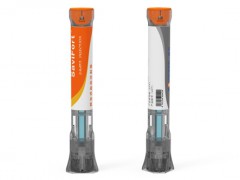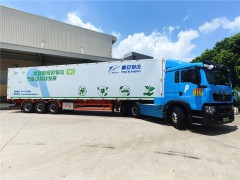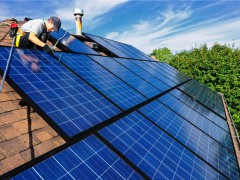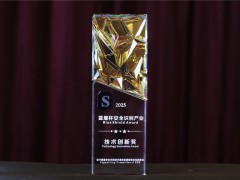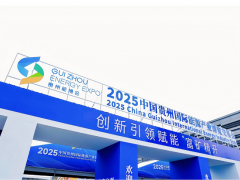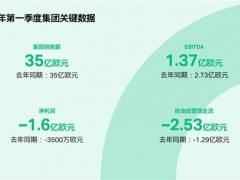據美國彭博新聞社紐約報道,更廉價的清潔能源時代已經結束,這給飽受供應危機沖擊的全球能源市場帶來了新的不確定性。
過去十年來,可再生能源的價格持續下跌,使其成為世界上大部分地區最廉價的電力來源。然而,去年太陽能電池板的價格飆升了50%以上。 風力渦輪機價格上漲了13%,電池價格也首次出現了上漲。
由于疫情導致的供應延遲影響了從汽車到色拉的所有產品,綠色能源的價格上漲可能并不令人意外。 但船運積壓和大宗商品短缺正發生在風能和太陽能特別脆弱的時刻。 經過多年技術和制造業的快速發展,在不犧牲利潤的情況下削減成本的機會越來越少。 價格不會永遠下跌,而是會根據原材料成本和其他市場力量上下波動。
在綠色轉型過程中,能源市場正努力應對停電和價格極端波動,清潔能源價格的上漲則是另一個不確定因素。 政策制定者被指責過快增加風能和太陽能發電,導致電網變得不穩定,他們面臨著壓力,要確保整個系統更加可靠——例如,通過將太陽能與電池配對,或讓老化的核電站運行更長時間。
IHS Markit清潔技術和可再生能源執行董事Edurne Zoco說:“從現在開始,對太陽能和風能發展產生影響的將不是成本——你能降低多少成本? ——但是是價值。”
新的定價模式
美國銀行分析師朱利安·迪穆林-史密斯說,由于各國央行都在考慮收緊貨幣政策以抑制通脹,更高的利率還可能增加風能和太陽能項目的成本。
史密斯說,“對這些高杠桿項目來說,最重要的投入之一就是利率。”他表示,“利率只是連續下降了10年。”
然而,氣候鷹派不需要擔心可再生能源的通脹。 即使最近成本上升,風能和太陽能已經從昂貴的、利基的電力來源發展到了與化石燃料競爭。 在世界上很多地方,可再生能源相對而言仍比化石燃料便宜,石油和天然氣的價格在過去一年里大幅上漲。 從長期來看,風能和太陽能的價格將繼續下降,盡管速度會放緩。 這意味著清潔能源裝置預計將在未來幾年保持快速增加。
盡管如此,可再生能源行業仍在努力應對供應鏈混亂的直接影響。 總部位于佛蒙特州伯靈頓的太陽能開發商Encore Renewable Energy LLC的首席執行官查德·法雷爾表示,該公司為太陽能電池板支付的費用已從2020年中期的每瓦特30美分上升到目前的每瓦特35美分。
挪威著名能源研究公司雷斯塔能源公司高級分析師大衛·迪克森說,原材料現在占成品模塊成本的70%,這讓供應商幾乎沒有削減成本的空間。 多晶硅是制造太陽能電池板光伏電池的關鍵材料之一。由于多晶硅短缺,去年的成本增加,運輸費也上升了。
美國風能和太陽能項目開發商Invenergy負責建設的執行副總裁阿爾特·弗萊徹說,該公司已經被迫推遲了一些項目,因為無法獲得太陽能電池板。 他說,盡管運輸費在去年飆升后開始下降,但可再生能源行業正經歷一場轉型。“我不相信我們會回到兩年前的狀態,”弗萊徹如是說。
價格反彈
太陽能工業協會和伍德麥肯茲去年12月曾預測,2022年美國太陽能裝置將減少15%,比該行業組織去年9月份的預測低25%左右。
迪克森說:“我們正處于價格下降的末端。”“商品價格將是模塊價格的唯一決定因素。”
風能行業正在經歷類似的轉型。彭博新能源財經的數據顯示,在截至2020年的10年里,價格下跌了48%,但現在趨于平穩,預計到2030年價格將下跌14%。
彭博新能源財經風能分析師奧利弗?梅特卡夫表示:“這是可再生能源行業日趨成熟的跡象。”
制造商將繼續通過增加裝置來降低每兆瓦成本。 然而,這些幾乎和法國埃菲爾鐵塔一樣高的巨型風力渦輪機需要更多的材料,尤其是鋼鐵。2021年,鋼鐵價格飆升,未來幾年可能仍將昂貴。 2021年下半年,供應鏈問題使陸上風力渦輪機的價格上漲了9%。
在一些地區,開發商已經在最佳位置安裝了風力渦輪機,現在正在尋找那些風力較少的地區或面積較小的地點。 這意味著開發商可能會使用專為低風速設計的風力渦輪機,或者推出定價較低的訂單,這兩種情況都會導致更高的每兆瓦價格。
關鍵大宗商品成本不斷上升,以及供應鏈持續中斷,全球最大的風力渦輪機制造商丹麥維斯塔斯風力系統公司去年不得不下調了其利潤預期。 維斯塔斯風力系統公司表示,這個行業需要做出一些改變,以提供足夠的風力發電能力,以達到全球氣候目標。
維斯塔斯風力系統公司高級副總裁莫滕·迪霍爾姆表示:“我們必須在這里豎起一面警告旗。我們需要關注整個行業的盈利能力。”
電池成本
電池也受到了通貨膨脹的沖擊。彭博新能源財經去年底曾表示,根據2010年以來匯編的數據,今年電池組的價格預計將首次上漲。 2.3%的漲幅可以歸咎于電池所含金屬價格的飆升、全球需求的激增以及供應鏈的緊張。
但與風能和太陽能相比,電池是清潔能源領域較新的組成部分。供應商仍在試驗新的化學品并提高產能,這意味著電池仍有更大幅度降價的空間。
全球可再生能源和儲存數字應用領先開發商Fluence能源公司在越南的合同制造廠已經出現了電池運輸延誤和成本上升的情況,但該公司預計這種情況不會持續下去。
Fluence能源公司首席財務官丹尼斯·費爾表示:“這些積壓的工作確實正在得到解決。”
盡管困擾可再生能源開發商的一些供應鏈問題正在緩解,但美國拉扎德投資銀行全球電力、能源和基礎設施主管喬治·比利奇說,這個行業正在經歷永久性的變化。沒有任何新的技術突破或重大整合,價格正在企穩。
“關于大幅成本下降的故事是,大幅成本下降將不再是故事,” 比利奇如是說。
李峻 編譯自 美國油價網
原文如下:
Global inflation brings ever-cheaper clean energy to an end
The era of ever-cheaper clean power is over, giving a fresh jolt of uncertainty to global energy markets battered by one supply crisis after another.
Relentless price declines over the past decade made renewables the cheapest sources of electricity in much of the world. In the past year, though, prices for solar panels have surged more than 50%. Wind turbines are up 13%, and battery prices are rising for the first time ever.
As pandemic-induced supply delays ensnare everything from cars to salads, green energy’s price hikes may not come as a surprise. But shipping backlogs and commodities shortages are coming at a particularly vulnerable moment for wind and solar. After years of rapid-fire advances in technology and manufacturing, there are fewer opportunities left to cut costs without sacrificing profits. Instead of perpetually falling, prices will now ebb and flow based on the cost of raw materials and other market forces.
For energy markets grappling with blackouts and extreme price volatility in the green transition, clean-power inflation is another wild card. Policy makers, accused of adding wind and solar so rapidly that electric grids have become unstable, are under pressure to ensure the entire system is more reliable — by pairing solar with batteries, for example, or keeping aging nuclear plants running for longer.
“From now on, what’s going to make the difference around the expansion of solar and wind is not going to be costs — how low can you go? — but value,” said Edurne Zoco, executive director of clean technology and renewables at research firm IHS Markit Ltd.
New Pricing Pattern
Higher interest rates are also threatening to increase costs for wind and solar projects as central banks weigh tighter monetary policy to curb inflation, said Julien Dumoulin-Smith, an analyst with Bank of America Corp.
“One of the single most important inputs that go into these highly levered projects are rates,” he said. “Interest rates have only gone down for a straight decade.”
Climate hawks need not fear renewable-energy inflation, however. Even with the recent rise in costs, wind and solar have evolved from expensive, niche sources of electricity to become competitive with fossil fuels. Renewables remain cheaper on a relative basis than fossil fuels in much of the world, and prices for oil and natural gas have surged over the past year. Over the long term, prices for wind and solar will continue to decline, albeit at a slower pace. That means clean-energy installations are expected to keep growing rapidly in the coming years.
Still, the industry is wrestling with the immediate effects of supply-chain snarls. Burlington, Vermont-based solar developer Encore Renewable Energy LLC is paying about 35 cents a watt for panels, up from 30 cents in mid-2020, according to Chief Executive Officer Chad Farrell.
Raw materials now account for 70% of the cost of finished modules, leaving suppliers with almost no room to trim expenses, said David Dixon, a senior analyst with research firm Rystad Energy. A shortage of polysilicon, one of the key materials for the photovoltaic cells that make up solar panels, increased expenses last year, and shipping costs also rose.
Invenergy, a U.S. developer of wind and solar projects, has been forced to delay some projects because it can’t get panels, said Art Fletcher, the company’s executive vice president of construction. Though shipping expenses are beginning to decline after jumping last year, the renewables industry as a whole is undergoing a transformation, he said.
“I don’t believe we’re ever going back to where we were two years ago,” Fletcher said.
Price Rebound
The Solar Energy Industries Association and Wood Mackenzie Ltd. forecast last month that U.S. installations will drop 15% in 2022, about 25% below the trade group’s September forecast.
“We’re getting to the tail end of price declines,” said Dixon. “Commodity prices will be the sole determinant of module prices.”
The wind industry is going through a similar transition. Prices plunged 48% in the decade through 2020, but are now leveling off and are expected to slide 14% through 2030, according to BloombergNEF.
“That’s a sign of the industry maturing,” said BNEF wind analyst Oliver Metcalfe.
Manufacturers will continue to reduce per-megawatt costs with larger installations. However, these massive turbines — almost as tall as the Eiffel Tower — require more materials, especially steel, which surged in 2021 and will likely remain costly for the next several years. Supply-chain issues boosted prices for onshore wind turbines 9% in the second half of 2021.
In some regions, developers have already installed turbines in the best locations and now are looking at less breezy areas or smaller sites. That means they may be using turbines designed for slower windspeeds or placing smaller orders, both of which lead to higher per-megawatt prices.
The world’s largest wind turbine maker, Denmark’s Vestas Wind Systems A/S, had to cut its profit forecast last year as it faced rising costs from key commodities and persistent supply-chain disruptions. Something will need to change for the industry to be able to deliver enough wind power capacity to hit the world's climate goals, the company said.
“We have to put up a warning flag here,” said Morten Dyrholm, senior vice president at Vestas. “We need to focus on profitability across the sector.”
Battery Costs
Batteries have also been hit by inflation. BNEF said late last year that it expected prices for battery packs to climb this year for the first time in data going back to 2010. The 2.3% increase can be blamed on soaring prices for the metals batteries contain, booming demand worldwide and strained supply chains.
But compared with wind and solar, batteries are a much newer part of the clean-energy landscape. Suppliers are still experimenting with new chemistries and ramping up production capacity, which means there’s still room for more significant price cuts.
Fluence Energy Inc., a grid-scale storage developer, has seen delays and increased costs to ship batteries from its contract manufacturing facility in Vietnam, but the company doesn’t expect that to last.
“This backlog that has been created is really being worked through,” said Chief Financial Officer Dennis Fehr.
While some of the supply-chain issues bedeviling renewables developers are easing, George Bilicic, head of global power, energy and infrastructure for Lazard Ltd., said the industry is undergoing permanent changes. Without any new technological breakthroughs or major consolidation, prices are stabilizing.
“The story about big cost declines is that large cost declines won't be the story anymore," Bilicic said.
免責聲明:本網轉載自其它媒體的文章,目的在于弘揚石化精神,傳遞更多石化信息,并不代表本網贊同其觀點和對其真實性負責,在此我們謹向原作者和原媒體致以敬意。如果您認為本站文章侵犯了您的版權,請與我們聯系,我們將第一時間刪除。

